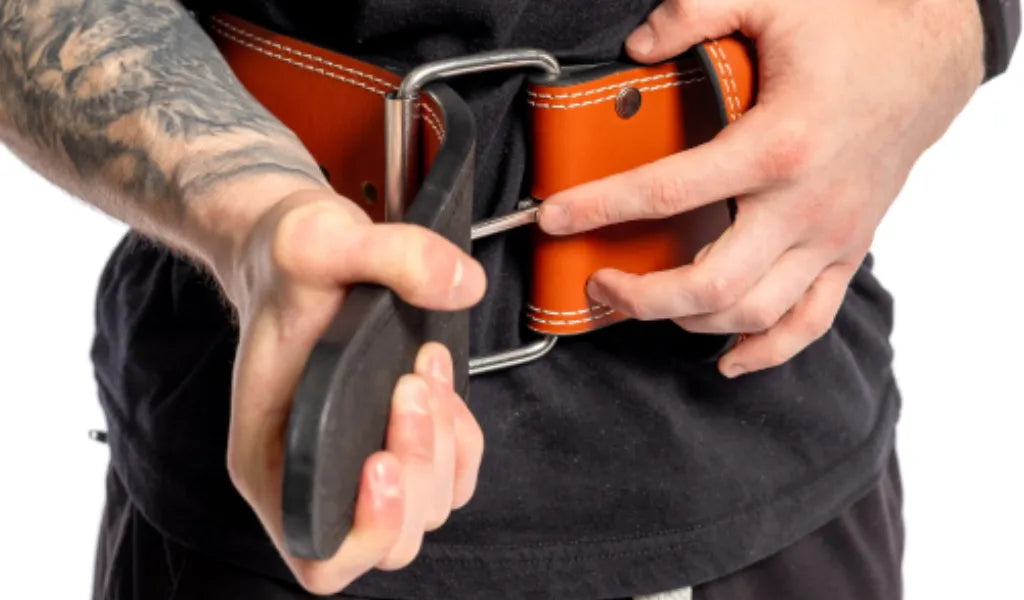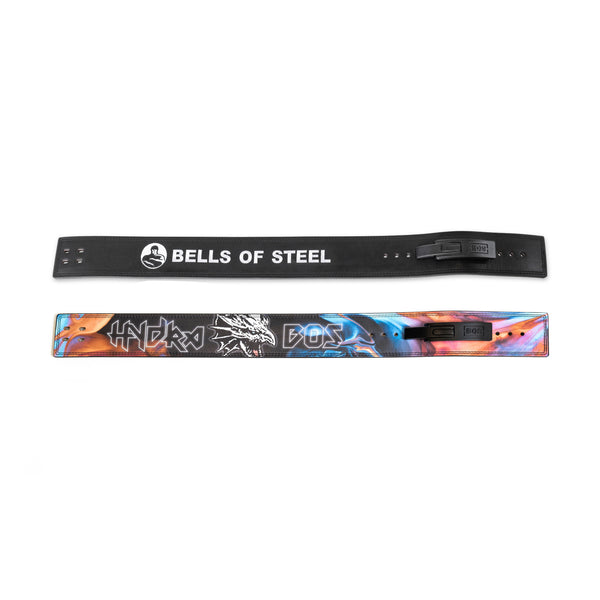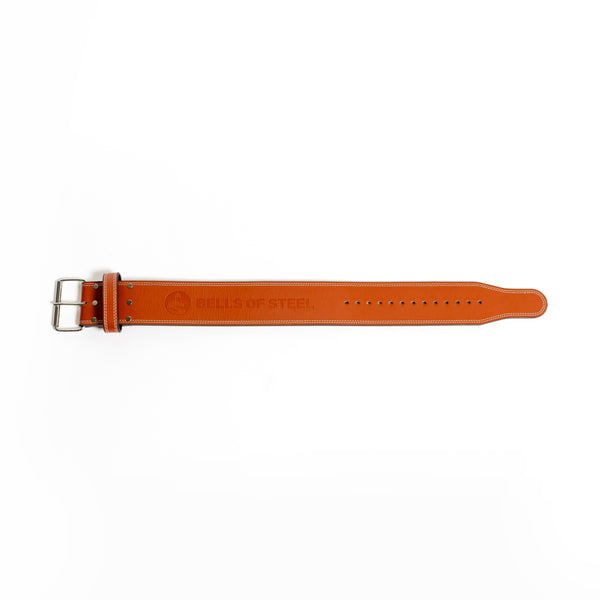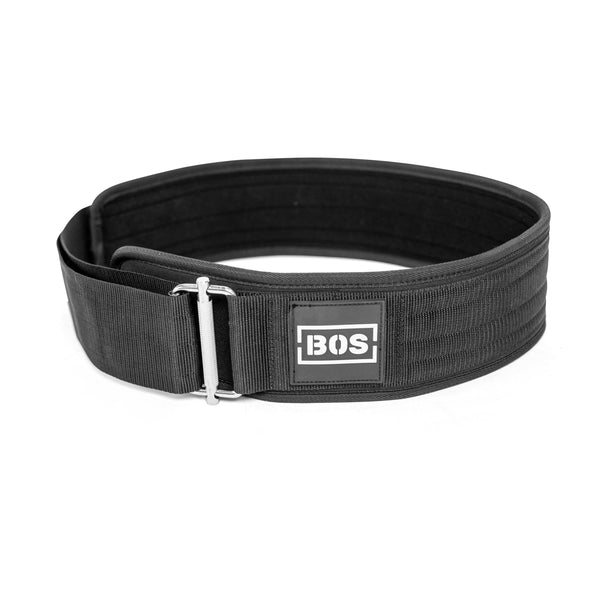When it comes to lifting heavy and pushing your strength to new heights, your back and core need some serious support. That’s where weightlifting belts come in. But not all belts are created equal, and if you’ve ever shopped for one, you’ve probably come across a dilemma: single prong or double prong?
Not sure what prongs even are? Don’t worry—we’ll break it all down and help you choose the right belt for your lifting style, so you can lift heavier without stressing over which prong setup to choose.
What Is a Prong Weightlifting Belt?
A prong weightlifting belt is a belt designed to provide core and lower back support during heavy lifts. The prong refers to the metal piece that secures the belt by fitting through holes on the belt strap. Think of it like your everyday belt for jeans, just thicker, stronger, and way more important for keeping your spine happy.
Prong belts typically come in two varieties:
- Single prong belts: These have one metal prong that secures the belt.
- Double prong belts: These have two prongs for added security.
Benefits of Using a Prong Weightlifting Belt
Lifting belts are not just for show (though they do look pretty badass). Here are the key benefits:
- Increased Intra-Abdominal Pressure: Helps stabilize your spine during heavy lifts.
- Improved Posture: Keeps your core braced and prevents your back from rounding.
- Reduced Risk of Injury: Provides essential support to your lower back.
- Enhanced Performance: Boosts confidence and allows you to lift heavier.
Who Should Use a Prong Weightlifting Belt?
If you're lifting heavy—think 80% or more of your one-rep max on squats, deadlifts, or overhead presses—a belt can be a game-changer. Advanced lifters chasing new PRs (personal records) definitely need one. Beginners may not need a belt right away but should consider it once they start handling heavier weights.
Single Prong vs. Double Prong Belts: What’s the Difference?
Single Prong Belts: The Simple, Reliable Option
A single prong belt has one metal prong that fastens through the belt holes. It’s straightforward and easy to adjust.
Pros:
- Quick and Easy to Fasten: Fewer prongs = faster adjustments.
- More Comfortable: Without an extra prong, it tends to be less bulky.
- Easier for Beginners: Ideal for those new to lifting belts.
Cons:
- Slightly Less Secure: For extremely heavy lifts, some lifters may prefer the extra security of double prongs.
Double Prong Belts: The Heavy-Duty Option
A double prong belt features two prongs instead of one. This design provides a bit more stability for lifters pushing serious weight.
Pros:
- Extra Security: Two prongs mean a more even and secure fit.
- Great for Max Effort Lifts: Ideal for powerlifters and heavy squat sessions.
Cons:
- Harder to Fasten: Wrestling with two prongs can be a pain, especially mid-workout.
- Bulkier Fit: Double prongs can feel more cumbersome around your midsection.
Key Considerations When Choosing Between Single and Double Prong Belts
1. Training Style
If you’re into competitive powerlifting and consistently push max weights, the extra security of a double-prong belt might be worth the hassle. For general strength training, a single prong belt will do the job.
2. Ease of Use
Do you want to spend time fiddling with your belt between sets? If not, go for a single prong. Double prongs can be trickier to adjust.
3. Comfort
If comfort is a priority (and it should be), single prong belts tend to feel less restrictive and are easier to tighten to your liking.
4. Durability and Support
Both types are durable if you choose a high-quality belt. Double prong belts may last longer under heavy-duty use because they distribute pressure more evenly.
FAQs About Prong Weightlifting Belts
Q: Should beginners use a weightlifting belt?
A: If you’re lifting heavy compound movements (squats, deadlifts, overhead presses) and feel your core struggling to maintain form, it’s worth considering. Start with a single prong belt for ease of use.
Q: Can I wear a lifting belt for every exercise?
A: You could, but that’s overkill. Save your belt for heavy compound lifts where back and core support are crucial.
Q: How tight should my belt be?
A: Tight enough that you can brace your core against it without feeling like you’re about to pass out. A snug but comfortable fit is the sweet spot.
Q: Which is better for powerlifting—single prong or double prong?
A: Double prong belts offer a bit more security for max effort lifts, making them a popular choice for competitive powerlifters. But if you find them annoying to fasten, a single prong belt is still a solid option.
Q: How do I maintain my prong belt?
A: Keep it dry, wipe it down occasionally, and store it in a cool, dry place. Leather belts may need conditioning to stay supple.
Conclusion: Prong Your Way to PRs
Whether you go for the simplicity of a single prong or the extra security of a double prong, choosing the right belt can make a huge difference in your lifting game. It’s all about finding the perfect balance between comfort, support, and your lifting goals. Ready to prong your way to personal records? Check out our top-quality lifting belts and find your perfect fit today!




